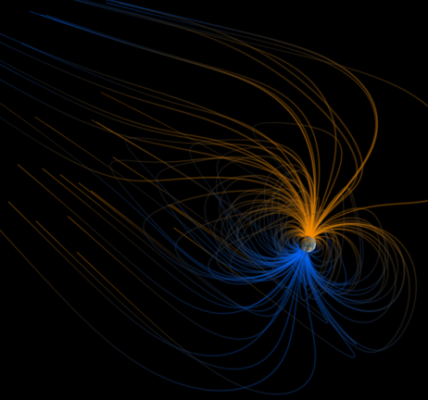World’s Fastest Microscope Captures Electron Motion, offering groundbreaking insights into electron dynamics. Learn how this revolutionary technology is advancing quantum physics and chemistry.

© Michael Osterrieder via Getty Images
World’s Fastest Microscope Captures Electron Motion
Scientists have achieved a significant breakthrough with the development of the world’s fastest microscope, capable of capturing the motion of electrons. This remarkable device, a highly advanced version of a transmission electron microscope, can take images of electrons as they move, which is a feat that has never been possible before. The ability to observe these tiny particles in motion could lead to a better understanding of the quantum world, offering new insights into the fundamental behaviors of electrons.
Understanding Electron Motion with Revolutionary Technology
Electrons are notoriously fast, traveling at an incredible speed of about 1,367 miles per second (2,200 kilometers per second). To put this into perspective, an electron could theoretically circle the Earth in just 18.4 seconds. Capturing their movement is no easy task, but the world’s fastest microscope captures electron motion by using one-quintillionth-of-a-second electron pulses. This ultra-short exposure time allows scientists to freeze electrons in motion, much like a high-speed camera can capture a bullet mid-flight.
The findings from this groundbreaking research were published on August 21 in the journal Science Advances. The team behind this innovation hopes that by using this microscope to observe electron behavior, they can unlock new knowledge about how these particles move and interact. Such insights could have far-reaching implications for both physics and chemistry, particularly in understanding how electrons arrange and rearrange themselves within atoms and molecules.
The Science Behind Capturing Electron Motion
The world’s fastest microscope captures electron motion by generating attosecond pulses. An attosecond is one quintillionth (1×10^-18) of a second—a timescale so short that it’s difficult to comprehend. For context, an attosecond compared to a second is like comparing a second to the entire age of the universe. This level of precision is necessary because even a few attoseconds are too long to capture the individual motions of electrons. To overcome this, the physicists behind the study engineered an electron gun that could produce pulses of just one attosecond.
These attosecond pulses hit the sample being studied, causing the electrons within it to slow down and change the shape of the electron beam’s wavefront. The altered beam is then magnified through a lens and directed onto a fluorescent material, which glows when struck by the beam. By analyzing this glow, scientists can effectively “see” the electron in motion.
Advancing Quantum Physics and Chemistry
The world’s fastest microscope captures electron motion using a process dubbed “attomicroscopy.” This technique represents a significant advancement in the field of quantum physics. By pairing the electron pulse with two carefully synchronized pulses of light—one to excite the electrons in the material and the other to assist in creating the electron pulse—scientists can probe the ultrafast movements of electrons inside atoms. For the first time, researchers can observe the behavior of electrons with attosecond temporal resolution, offering a glimpse into the quantum processes that govern how electrons move and interact.
The ability to capture electron motion at such an incredibly small timescale opens up new possibilities for scientific discovery. Electrons play a critical role in nearly all chemical reactions and physical processes, from the way electricity flows through semiconductors to how atoms bond to form molecules. By studying these processes at the electron level, scientists can develop a deeper understanding of the forces that drive them, potentially leading to advancements in technology, materials science, and medicine.
The Impact of Attomicroscopy on Future Research
The introduction of attomicroscopy marks a new era in the study of electron dynamics. With the world’s fastest microscope capturing electron motion, researchers can now explore phenomena that were previously too fast to observe. This could lead to groundbreaking discoveries in various fields, including semiconductor research, quantum computing, and even the development of new materials with unique properties.
One of the most exciting aspects of this technology is its potential to reveal the intricate details of chemical reactions. For example, when chemical bonds between atoms break or form, electrons are rapidly rearranged. Understanding these processes at the attosecond level could provide new insights into how chemical reactions occur, enabling scientists to design more efficient catalysts or develop novel materials with improved performance.
Future Applications and Discoveries
The world’s fastest microscope captures electron motion not only to push the boundaries of what we know about quantum physics but also to pave the way for future technologies. As researchers continue to refine this technology, it could become an essential tool for studying a wide range of phenomena. From exploring the behavior of electrons in biological systems to improving the efficiency of solar cells, the potential applications of attomicroscopy are vast.
Moreover, this technology could lead to the development of new diagnostic tools in medicine. By observing how electrons move within cells and tissues, scientists might gain new insights into the molecular mechanisms behind diseases, leading to better treatments and therapies. The ability to study electron dynamics in real-time could also enhance our understanding of how drugs interact with cells at the molecular level, potentially leading to the development of more effective medications with fewer side effects.
Conclusion
In summary, the world’s fastest microscope captures electron motion, offering a revolutionary tool for scientists to explore the quantum world. By achieving attosecond temporal resolution, this breakthrough technology allows researchers to observe electron dynamics in unprecedented detail, providing new insights into the fundamental processes that drive the behavior of matter.
ALSO READ:




2 COMMENTS